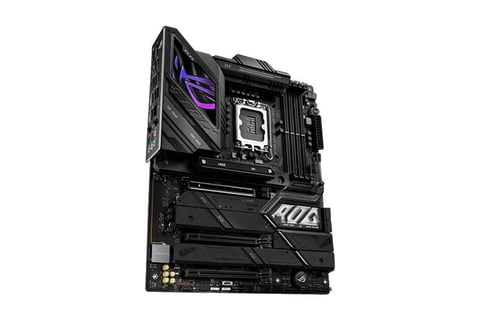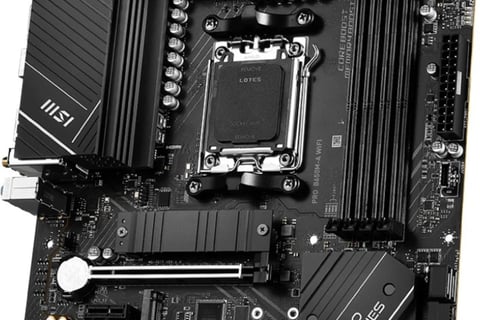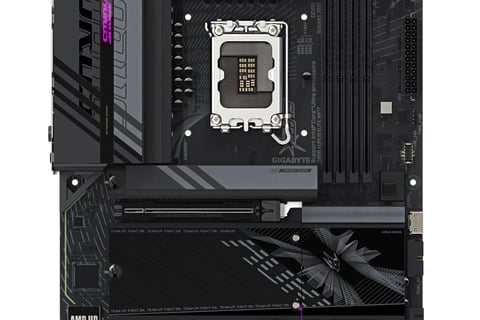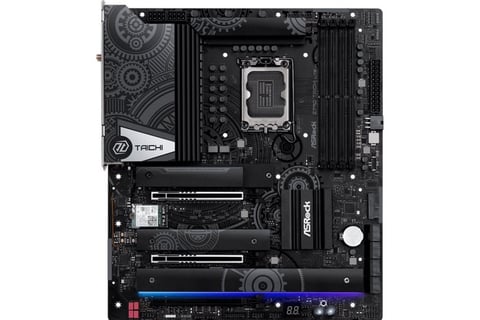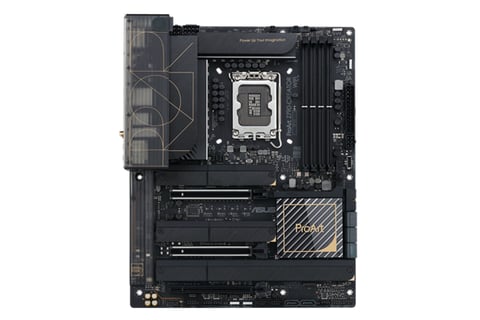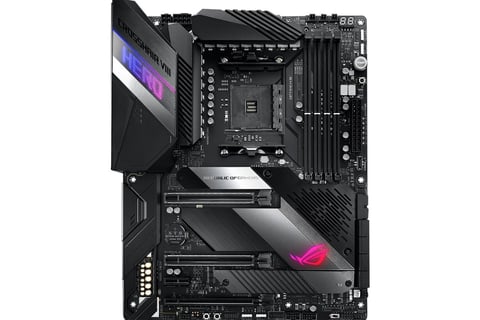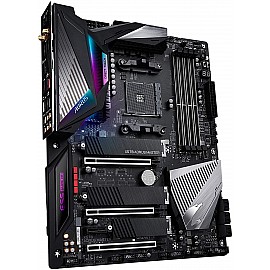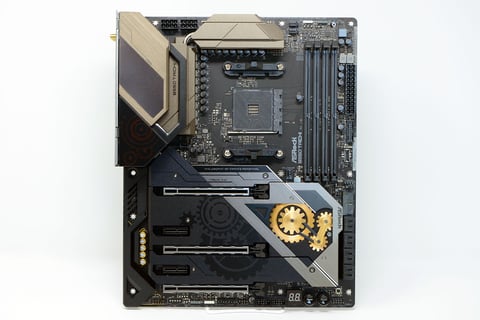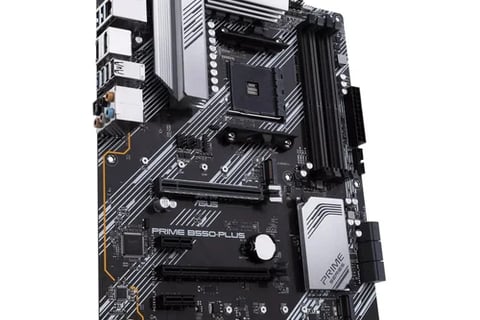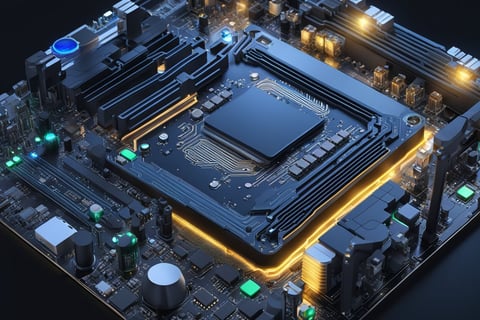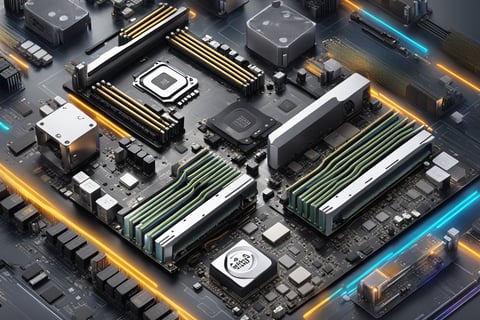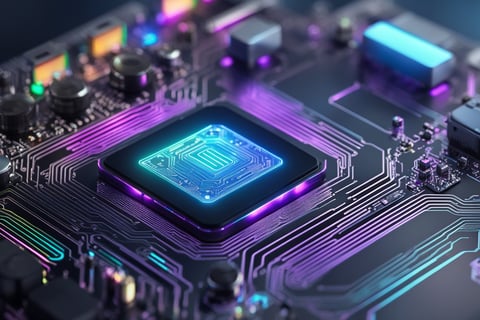Best Motherboards for Ryzen & Intel CPUs in 2025
2/21/20257 min read
Choosing the right motherboard is crucial for optimizing performance, whether building a system around Intel or Ryzen CPUs. In 2025, the top five ranked motherboards combine cutting-edge technologies with reliability, catering to a variety of needs and budgets. These boards not only enhance processing power but also support the latest features, like PCIe 5.0 and DDR5 memory.
Each motherboard listed comes with detailed specifications, including power delivery systems, connectivity options, and thermal performance. By examining these top contenders, builders can make informed decisions that maximize their investment in both hardware and gaming or productivity experiences.
Top 5 Motherboards for Intel CPUs in 2025
In 2025, several motherboards stand out for Intel CPUs due to their robust features, compatibility, and performance. The following models showcase advanced specifications catering to gamers, creators, and everyday users.
1. ASUS ROG Strix Z790-E Gaming WiFi
Chipset: Intel Z790
Form Factor: ATX
Memory Support: DDR5, up to 128GB
PCIe Slots: 3 x PCIe 5.0 x16
Storage: 4 x M.2 slots + 6 x SATA 6Gb/s
Networking: Wi-Fi 6E, 2.5Gb Ethernet
This model excels in gaming performance with its extensive cooling solutions and customizable RGB lighting. It supports PCIe 5.0 for high-speed devices, ensuring future-proofing.
Chipset: Intel Z790
Form Factor: ATX
Memory Support: DDR5, up to 128GB
PCIe Slots: 1 x PCIe 5.0 x16, 2 x PCIe 4.0 x16
Storage: 3 x M.2 slots + 6 x SATA 6Gb/s
Networking: Wi-Fi 6E, 10Gb Ethernet
The MSI MPG Z790 Carbon combines a sleek design with effective thermal management. Its robust power delivery system is ideal for overclocking Intel CPUs, and it offers multiple high-speed connectivity options.
Chipset: Intel Z790
Form Factor: E-ATX
Memory Support: DDR5, up to 128GB
PCIe Slots: 4 x PCIe 5.0 x16
Storage: 3 x M.2 slots + 6 x SATA 6Gb/s
Networking: Wi-Fi 6E, 2.5Gb Ethernet
This motherboard is tailored for enthusiasts who prioritize performance. It features a high-end thermal design and a smart fan control system, allowing users to maintain optimal operation during intense tasks.
Chipset: Intel Z790
Form Factor: ATX
Memory Support: DDR5, up to 128GB
PCIe Slots: 3 x PCIe 5.0 x16
Storage: 3 x M.2 slots + 8 x SATA 6Gb/s
Networking: Wi-Fi 6E, 10Gb Ethernet
The ASRock Z790 Taichi stands out with its unique design and extensive connectivity options. Its advanced chipset and multiple M.2 slots cater to extensive storage needs, making it an ideal choice for power users.
Chipset: Intel Z790
Form Factor: ATX
Memory Support: DDR5, up to 128GB
PCIe Slots: 2 x PCIe 5.0 x16
Storage: 4 x M.2 slots + 6 x SATA 6Gb/s
Networking: Wi-Fi 6E, 2.5Gb Ethernet
Designed for creators and professionals, the ASUS ProArt Z790-CREATOR offers versatile I/O options, including Thunderbolt 4 support. Its high-performance features make it suitable for demanding creative applications.
Top 5 Motherboards for AMD Ryzen CPUs in 2025
The following motherboards stand out in 2025 for users looking to maximize the performance of AMD Ryzen CPUs. Each option provides unique features and specifications tailored for various needs and preferences.
1. ASUS ROG Crosshair VIII Hero
Socket: AM4
Chipset: X570
Memory Support: Up to 128GB DDR4 3200MHz
Expansion Slots: 2x PCIe 4.0 x16, 1x PCIe 4.0 x1
Storage Options: 2x M.2 slots, 8x SATA 6Gb/s
The ASUS ROG Crosshair VIII Hero is designed for gamers and enthusiasts. It offers robust power delivery and advanced cooling options. Featuring Wi-Fi 6 and excellent audio capabilities, it stands as a premium choice.
2. MSI MPG B550 Gaming Edge WiFi
Socket: AM4
Chipset: B550
Memory Support: Up to 128GB DDR4 4400MHz
Expansion Slots: 1x PCIe 4.0 x16, 1x PCIe 3.0 x16
Storage Options: 1x M.2 slot, 6x SATA 6Gb/s
This mid-range board is perfect for gamers looking for a balance of features and price. The MSI MPG B550 Gaming Edge WiFi supports popular gaming functionalities. Enhanced cooling through its design ensures stability during high-performance tasks.
3. Gigabyte Aorus X570 Master
Socket: AM4
Chipset: X570
Memory Support: Up to 128GB DDR4 3600MHz
Expansion Slots: 3x PCIe 4.0 x16
Storage Options: 3x M.2 slots, 6x SATA 6Gb/s
The Gigabyte Aorus X570 Master delivers exceptional performance for power users. With a robust VRM design, it supports high overclocking potential. It also features excellent thermal solutions to keep temperatures low.
4. ASRock B550 Taichi
Socket: AM4
Chipset: B550
Memory Support: Up to 128GB DDR4 4400MHz
Expansion Slots: 2x PCIe 4.0 x16
Storage Options: 3x M.2 slots, 8x SATA 6Gb/s
The ASRock B550 Taichi combines aesthetics with functionality. It includes a stylish design with a highly efficient power solution. The inclusion of multiple USB ports enhances connectivity for peripherals and additional devices.
5. ASUS TUF Gaming B550-PLUS
Socket: AM4
Chipset: B550
Memory Support: Up to 128GB DDR4 4400MHz
Expansion Slots: 2x PCIe 4.0 x16
Storage Options: 2x M.2 slots, 6x SATA 6Gb/s
The ASUS TUF Gaming B550-PLUS offers durability and performance for gamers. With military-grade components, it ensures long-lasting reliability. Advanced cooling options and customizable RGB lighting are bonus features for many users.
Performance Comparisons
This section examines the benchmarking methodology employed and the performance metrics used to evaluate the top motherboards for Intel and Ryzen CPUs in 2025. Detail is provided to highlight how these factors contribute to overall performance.
Benchmarking Methodology
The benchmarking methodology involves a rigorous evaluation of motherboard performance through a series of standardized tests.
Testing includes:
Synthetic Benchmarks: Tools like 3DMark and Cinebench focus on CPU and GPU performance.
Real-world Applications: Programs such as Adobe Premiere and Blender are used for practical performance insights.
Stability Tests: Stress tests assess how motherboards handle peak loads over extended periods.
Each motherboard is tested under identical conditions, ensuring comparable results. Configurations include the latest Intel and Ryzen processors with matched RAM specifications to maintain fairness in testing.
Performance Metrics
Key performance metrics guide assessment and comparison.
CPU Performance: Measured using multi-core and single-core scores from tools like PassMark.
Memory Speed: Evaluated through RAM bandwidth tests, which capture data transfer rates.
Thermal Performance: Monitored using temperature readings under load to assess cooling efficiency.
Feature Availability: Includes factors like PCIe lanes, USB ports, and connectivity options influencing performance and future-proofing.
These metrics provide a comprehensive view of each motherboard's capabilities, ensuring informed decisions for users based on their specific needs.
Architectural Innovations and Features
The latest motherboards for Intel and Ryzen CPUs in 2025 showcase several advancements in architecture and features. Innovations in chipsets, memory technology, and expansion capabilities significantly enhance overall performance and usability.
Chipset Advances
Manufacturers have integrated cutting-edge chipsets that improve data processing and system stability. For Intel CPUs, the Z790 chipset offers enhanced power delivery and support for PCIe 5.0, allowing for higher bandwidth.
For Ryzen, the X670E chipset excels with support for PCIe 5.0 and DDR5, facilitating faster speeds. Enhanced I/O capabilities enable more peripherals and storage devices simultaneously. Monitoring features like thermal sensors and voltage regulation also help maintain optimal performance during demanding tasks.
Memory Technology Support
The latest motherboards support DDR5 memory, which provides higher speeds and better energy efficiency compared to DDR4. This advancement leads to significantly improved performance in applications like gaming and content creation.
Motherboards equipped with dual-channel configurations can achieve bandwidths of up to 6400 MT/s or higher. Additionally, features like XMP (Extreme Memory Profile) allow users to easily overclock memory, maximizing performance without deep technical knowledge.
Support for ECC (Error-Correcting Code) memory is also available on select boards, improving stability for critical workloads.
Expansion Capabilities
Modern motherboards boast an array of expansion slots catering to diverse components. Multiple PCIe 5.0 slots allow users to install high-speed GPUs and additional accessories without bandwidth limitations.
Furthermore, M.2 slots for NVMe SSDs increase storage performance significantly, with some boards offering support for up to five M.2 drives. USB 4.0 ports provide fast data transfer rates and backward compatibility with previous USB standards, enhancing connectivity.
These expansion options make it easier for users to customize their builds according to specific needs.
Buying Guide
Selecting the right motherboard is essential for harnessing the full potential of both Intel and Ryzen CPUs. Several factors influence this decision, including chipset capabilities, socket compatibility, and features tailored to specific uses like gaming or content creation.
Choosing the Right Motherboard
When selecting a motherboard, the chipset plays a significant role in performance and feature set. The chipset determines the compatibility with specific processors and often dictates maximum RAM speeds and expansion options.
Users should evaluate whether they need features like multiple PCIe slots for graphics cards or NVMe drives. Additionally, connectivity options such as USB Type-C, Wi-Fi 6, and Bluetooth may enhance the user experience. Choices should align with intended use, whether it’s for high-end gaming, productivity, or casual computing.
Considerations for Future Proofing
Future-proofing is a key factor in motherboard selection. As technology evolves, the ability to upgrade becomes vital. Opting for a motherboard with advanced features can ensure longevity.
Look for support for the latest DDR memory standards and PCIe version updates. A board with ample M.2 slots allows for more storage expansion, accommodating future demands. It’s also wise to choose a motherboard that supports multiple GPU configurations, as this can extend its usability for years.
Compatibility Checklist
Compatibility is crucial during the motherboard selection process. First, confirm the CPU socket matches the processor type, whether it is Intel's LGA or AMD's AM4/AM5 sockets.
Check RAM compatibility, including type (DDR4 or DDR5), speed, and maximum capacity. Ensure that any GPU fits in the designated PCIe slots and that the motherboard can supply sufficient power. Additional items to verify include dimension compatibility with the PC case and adequate cooling solutions to prevent overheating.
